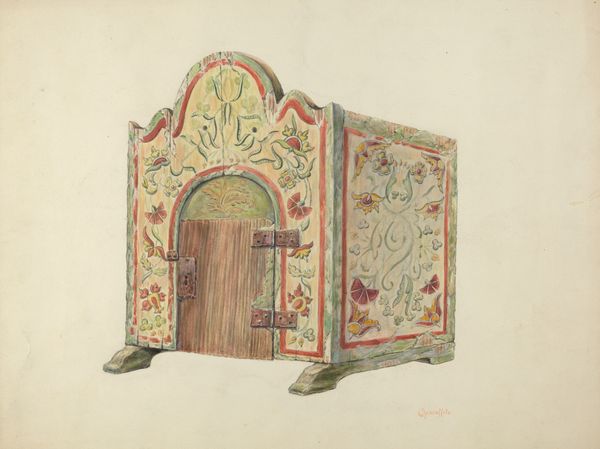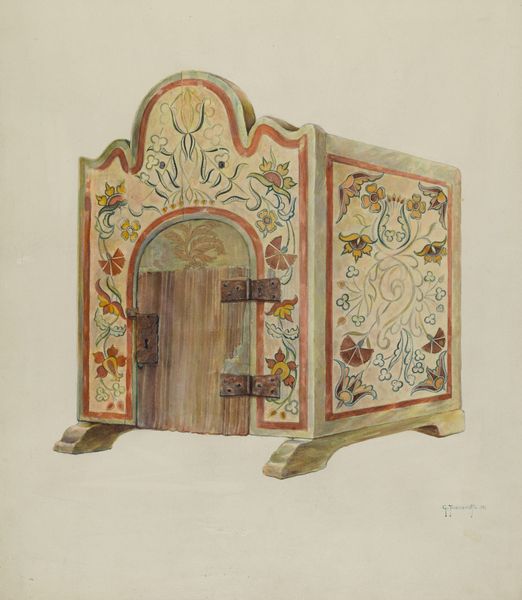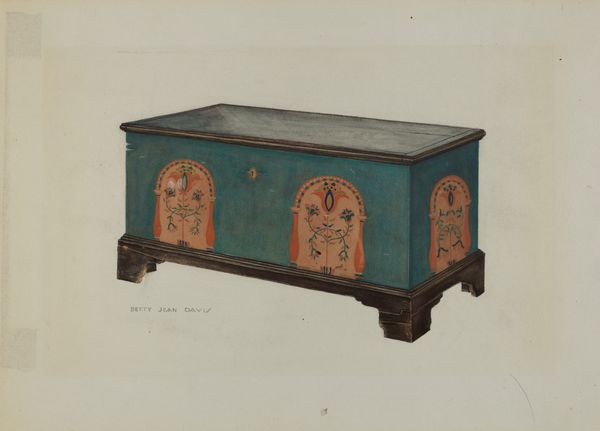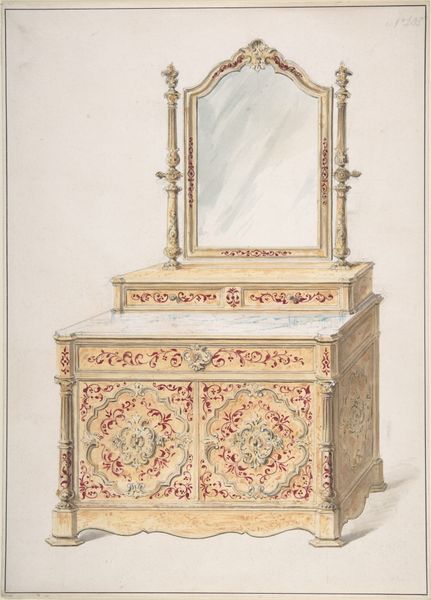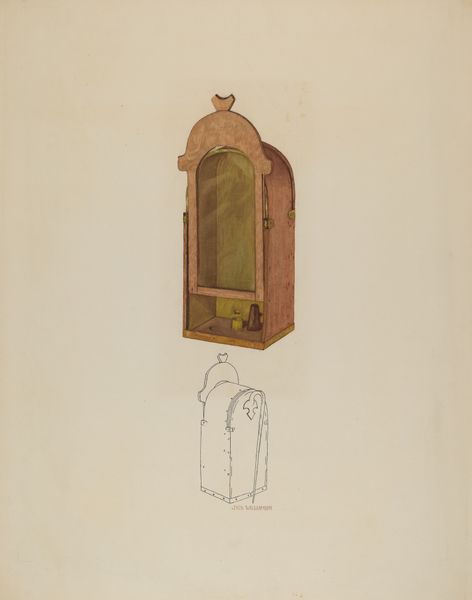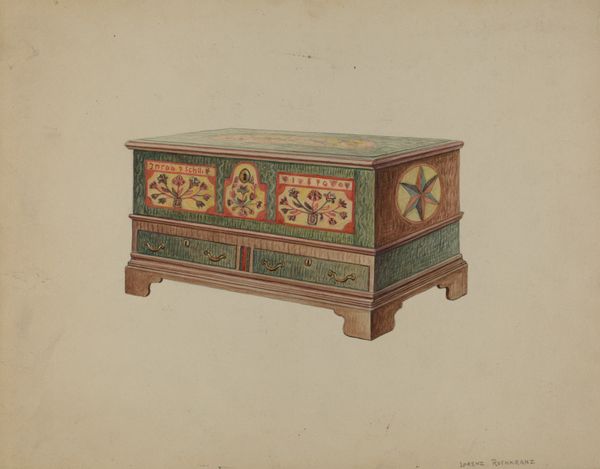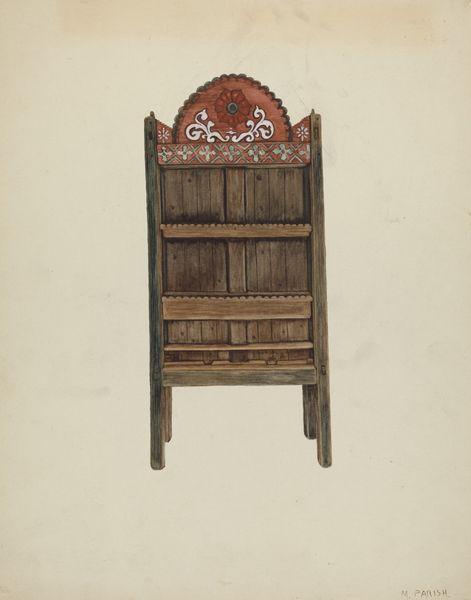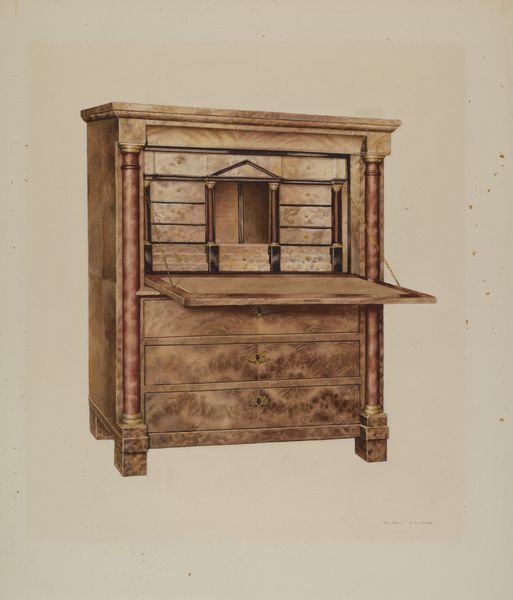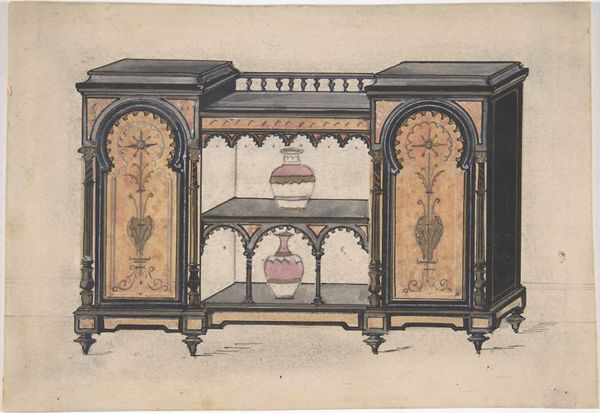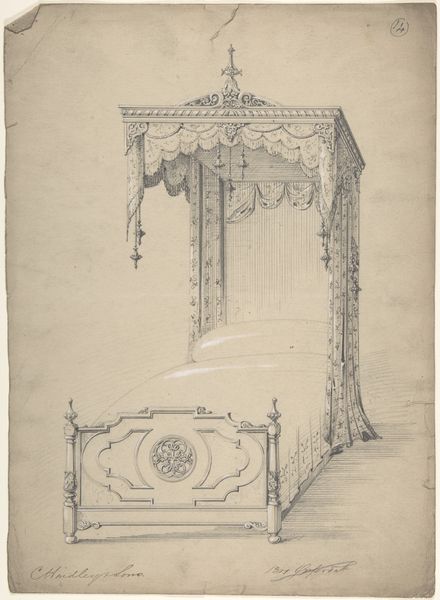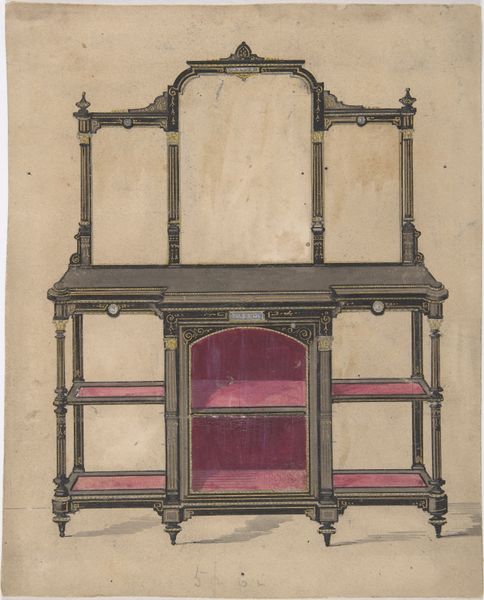
drawing, coloured-pencil
#
drawing
#
coloured-pencil
#
coloured pencil
#
folk-art
#
history-painting
#
academic-art
Dimensions: overall: 35.6 x 26.7 cm (14 x 10 1/2 in.) Original IAD Object: Height of box: 19"x13 1/2"deep x 17"wide
Copyright: National Gallery of Art: CC0 1.0
Editor: This is William Kieckhofel's "Tabernacle (Ecclesiastical Furniture)," made in 1939, with colored pencils. It has this almost naive charm to it. I'm struck by how decorative it is. How do you see this piece in its historical context? Curator: I see a deliberate embrace of folk art traditions, specifically within a moment increasingly shaped by mass production. This returns our focus to handcrafted objects, possibly suggesting an anti-modernist sentiment, a reclaiming of localized craft in response to standardization. Given it's labeled as a tabernacle, where does that put it in the context of public art and religious institutions? Editor: It seems to elevate this functional piece to something beyond its intended use, almost like it’s making a statement. Was it common to see folk art influence within religious settings? Curator: Not uniformly, no. However, movements seeking authentic and localized expression often incorporated folk aesthetics. Think about how the Arts and Crafts movement attempted to counteract industrial manufacturing with hand-made quality objects. So the question isn't so much *was* it common, but what message is being conveyed by this aesthetic choice? Was this made *for* an institution, or *about* one? Editor: So it might be a commentary on the role of religion and the church at the time? Highlighting, maybe, how folk traditions fit—or don’t fit—within established structures? Curator: Precisely! Consider also that folk art is often appropriated by outsiders seeking a sense of authenticity. In what ways can it reinforce certain social hierarchies or power dynamics within cultural spaces? Editor: This perspective makes me see the piece very differently! I had initially only noticed the pretty, simple decoration. Thanks for illuminating this for me. Curator: My pleasure. It is easy to appreciate at surface level, but I wonder, does this speak to accessibility of imagery for the public? Thanks for a thoughtful dive into social relevance through art.
Comments
No comments
Be the first to comment and join the conversation on the ultimate creative platform.
